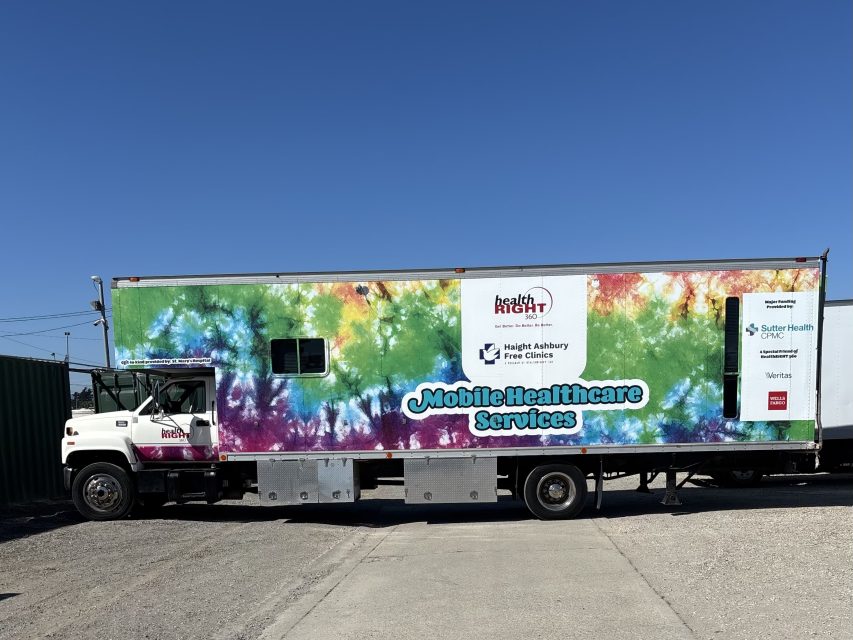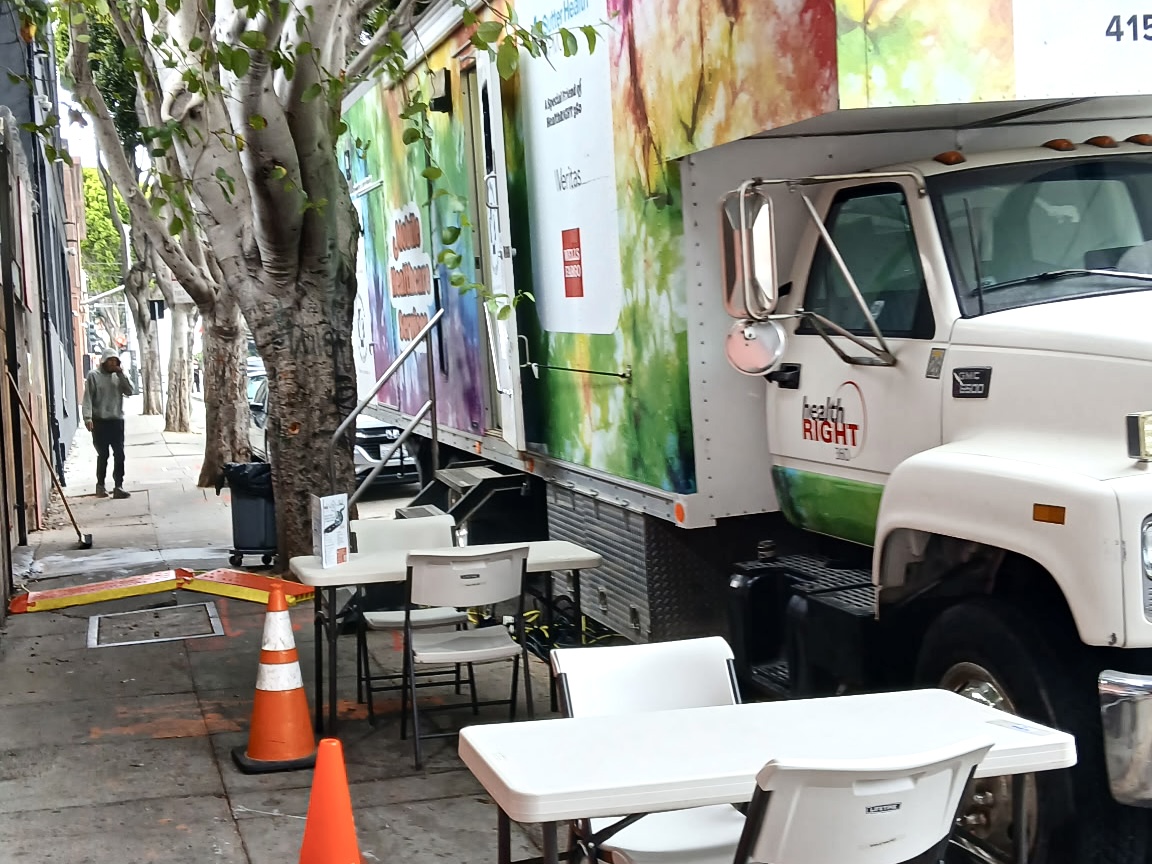A mini-clinic on wheels will start offering mobile healthcare services in the Mission District on Friday, part of an initiative from drug and mental health provider HealthRIGHT 360 to fill gaps in medical care.
Complete with two private exam rooms and a triage area, and staffed with a team of medical and service providers, the colorful trailer is the first stage of Sutter Health’s new foray into mobile healthcare.
The nonprofit healthcare giant will be funding the initiative, which it says it will replicate across California starting in 2026.
The service will be available on Fridays at 24th and Capp streets, and eventually will be stationed weekly on Treasure Island and at a Mission District soup kitchen.
“We see this as part of a larger movement to ensure that healthcare is responsive to people’s lives, and not the other way around,” said HealthRIGHT 360 spokesperson Wes Saver.
A six-person team of medical providers, outreach workers and case managers, will offer primary and preventative care, as well as treat acute wounds or other immediate needs. They will also be able to refer people to HealthRIGHT 360’s facility at 1563 Mission St. or mental health care.
The idea is to catch health issues “upstream” before patients end up in the emergency room, said Jodi Nerell, a community health director with Sutter Health. “We really wanted to accelerate and connect our hospital system to street medicine programs locally.”
 Photo courtesy of HealthRight 360.
Photo courtesy of HealthRight 360.
The city has made a major effort to crack down on unpermitted vending and open-air drug use at and near the 16th Street and 24th Street BART plazas.
Although the Gubbio Project and outreach workers from the Department of Health and other city departments have been on the ground offering services in the Mission, residents have long called for more outreach and aid.
Street and mobile medical teams have long been present in San Francisco, though perhaps not on this scale. Tenderloin residents are familiar with the University of California, San Francisco’s, roving nurse program, or GLIDE’s healthcare vans.
During the pandemic, mobile clinic options became a popular tool to address health needs in hard-to-reach communities.
One-third of California’s homeless population lives within Sutter’s geographic footprint, Nerell said, so the company plans to supplement all 21 areas where it provides emergency care by 2030 with mobile care offerings.
Sutter is providing a $500,000 grant for the San Francisco van this year, and next year plans to launch similar teams in Alameda, the Central Valley and Sacramento.
Starting Friday, the van will be parked at the Capp Street lot dubbed “La Placita,” a stone’s throw away from the 24th Street BART plaza, where immigrant communities, unhoused and drug-addicted people, street vendors and commuters intermix.
Also starting on Friday, Unidos en Salud will launch seasonal COVID and flu testing and vaccines.
In recent weeks, the van service soft-launched on Treasure Island, where HealthRIGHT 360 runs transitional living programs for people leaving in-patient rehab.
Soon, the van will also be stationed weekly at the Martin de Porres soup kitchen, another Mission location on Potrero Avenue at 15th Street. Eventually, Saver said providers will also be walking the streets with backpacks.
HealthRIGHT 360 initially launched the very same trailer in the Tenderloin in 2019, but paused operations as the pandemic took hold.
The concept is gaining momentum: In the last two years, the San Francisco Department of Public Health reports that it has more than tripled its number of street healthcare workers.
Across the state, more than 70 street-medicine programs operate, and that is now financially easier for healthcare companies: On Monday, Gov. Gavin Newsom approved AB 543, which lets homeless patients use Medi-Cal when receiving care on the streets.
When the opportunity arose with HealthRIGHT 360, “it was a no-brainer” to start a partnership, said Susana Rojas, the director of Calle 24, which typically coordinates operations at the lot.
“We had seen the increase of people who are struggling with addiction and struggling with homelessness in our streets,” said Rojas, who said her organization had long wanted a medical offering in the neighborhood, but didn’t have the resources “to give them support, to help them feel connected to the community.”
